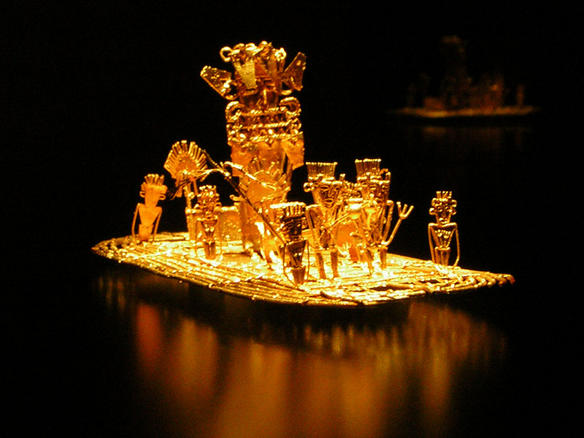Facts About Muisca raft
The Muisca Raft, often referred to as the El Dorado Raft, is a captivating gold artifact created by the Muisca people, a pre-Columbian civilization from the Colombian Andes. This extraordinary piece, dating back to between 600 and 1600 AD, was crafted using the lost-wax casting technique. Composed primarily of gold, with a minor admixture of copper, it is prominently displayed at the Gold Museum in Bogotá.
Beyond its aesthetic appeal, the raft narrates a significant cultural story. It represents the investiture ceremony of the Muisca chief. During this ritual, the chief would cover himself in gold dust and then plunge into Lake Guatavita, offering gold and emeralds to the gods. The raft itself is designed like a log boat, featuring a central figure believed to be the chief, adorned in intricate headdresses. Surrounding him are figures thought to be soldiers carrying banners, adding to the ceremonial ambiance of the artifact.
The raft was discovered in 1969 by farmers who stumbled upon it in a cave in Colombia. Eventually, it was brought to the Gold Museum in Bogotá, where it has become one of the star exhibits. Made from an alloy of gold, copper, and silver, the raft contains approximately 229 grams of gold in total.
This artifact is not merely a historical object; it provides a profound insight into the rich cultural heritage and intriguing rituals of the Muisca people.

 Panama
Panama